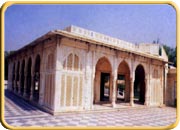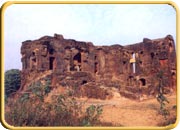Punjab
History of Punjab
 The
land of five rivers, this state was known as Panchal when the Aryans came to
India in the third millennium BC. before that, the whole region of the Sindhu
(Indus) and its tributaries were inhibited by the Harappans or the people of
Copper age who constructed great cities in this region. Ropar in modern Punjab
is a great example of this civilization. The Harappan culture declined suddenly
between 1800-1700 BC and its end is as puzzling as its beginning.
Punjab was the first place on the Indian subcontinent where the Aryans actually
decided to settle after a long period of grazing and fighting with the aboriginal
communities. This was the place where later parts of the Rgveda and other Vedas
were written. This was
The
land of five rivers, this state was known as Panchal when the Aryans came to
India in the third millennium BC. before that, the whole region of the Sindhu
(Indus) and its tributaries were inhibited by the Harappans or the people of
Copper age who constructed great cities in this region. Ropar in modern Punjab
is a great example of this civilization. The Harappan culture declined suddenly
between 1800-1700 BC and its end is as puzzling as its beginning.
Punjab was the first place on the Indian subcontinent where the Aryans actually
decided to settle after a long period of grazing and fighting with the aboriginal
communities. This was the place where later parts of the Rgveda and other Vedas
were written. This was  also
the place where first war for the control of entire north India or Aryawart
(as it was known in those days) was fought between the Aryans and non-Aryans,
known as Dasragya War (war of 10 kings).
also
the place where first war for the control of entire north India or Aryawart
(as it was known in those days) was fought between the Aryans and non-Aryans,
known as Dasragya War (war of 10 kings). Punjab always had a strategic importance due to its position on the famous Grand Trunk Road that connected the eastern parts of India to the extreme northwest point of Taxila (now in Afghanistan). This road was first constructed by Ashoka to have a better administration of the northwestern frontier, which was always a problem. After the decline of the Mauryan Empire, the Indo Greeks, Guptas, and Vardhans ruled this region in succession. After the coming of Muslims in the 9th-10th century AD, the region became an integral part of the Delhi Sultanate and the Mughal Empire. It was also under the Maratha rule for some time.
After the decline of the Mughal Empire, the most prominent ruler in this land was Maharaja Ranjit Singh in the early 19th century. After the death of Maharaja Ranjit Singh, the Sikhs could not hold on to their territory for long and the British controlled most of the region either directly or through the princely states.
Select a holiday with us